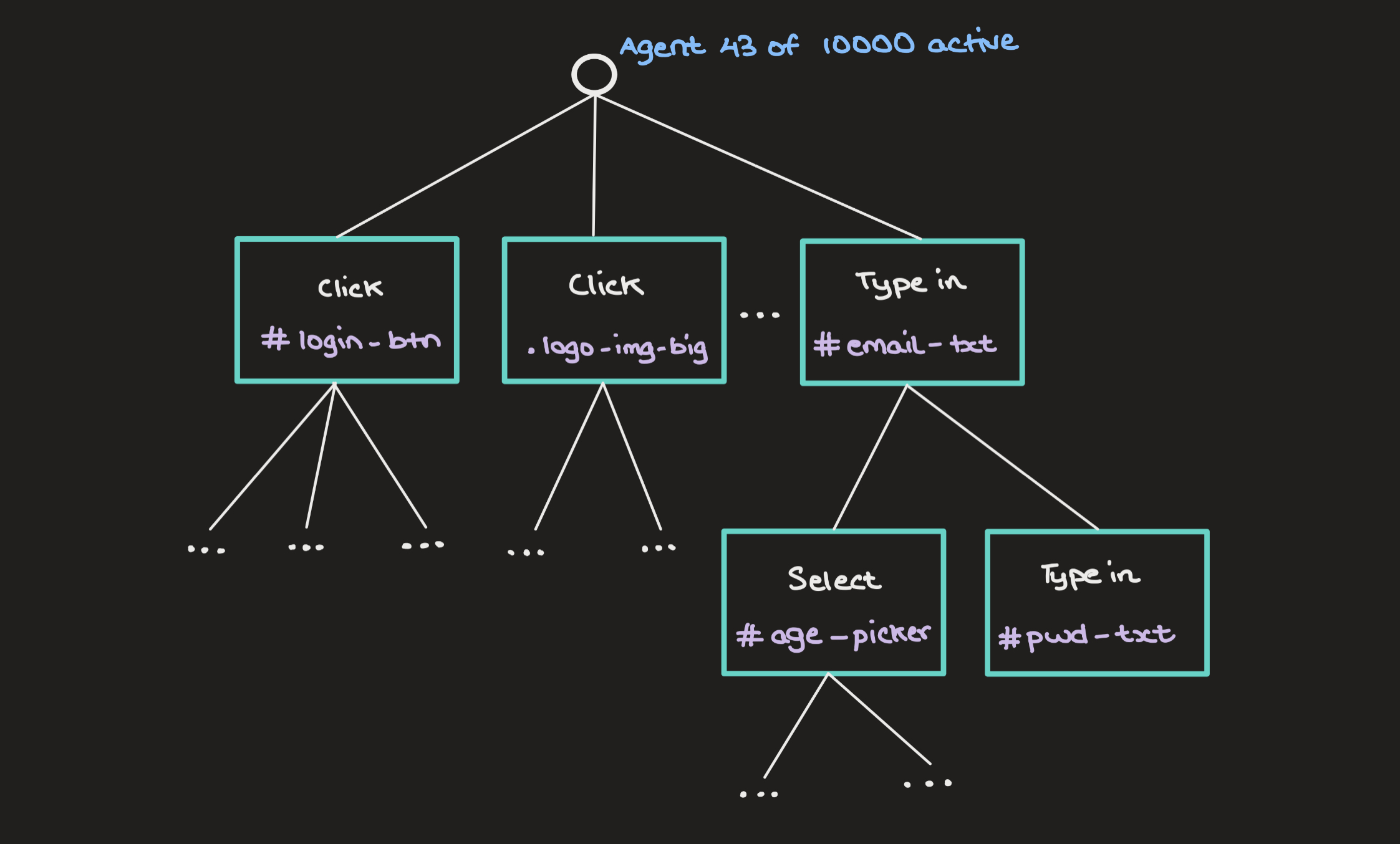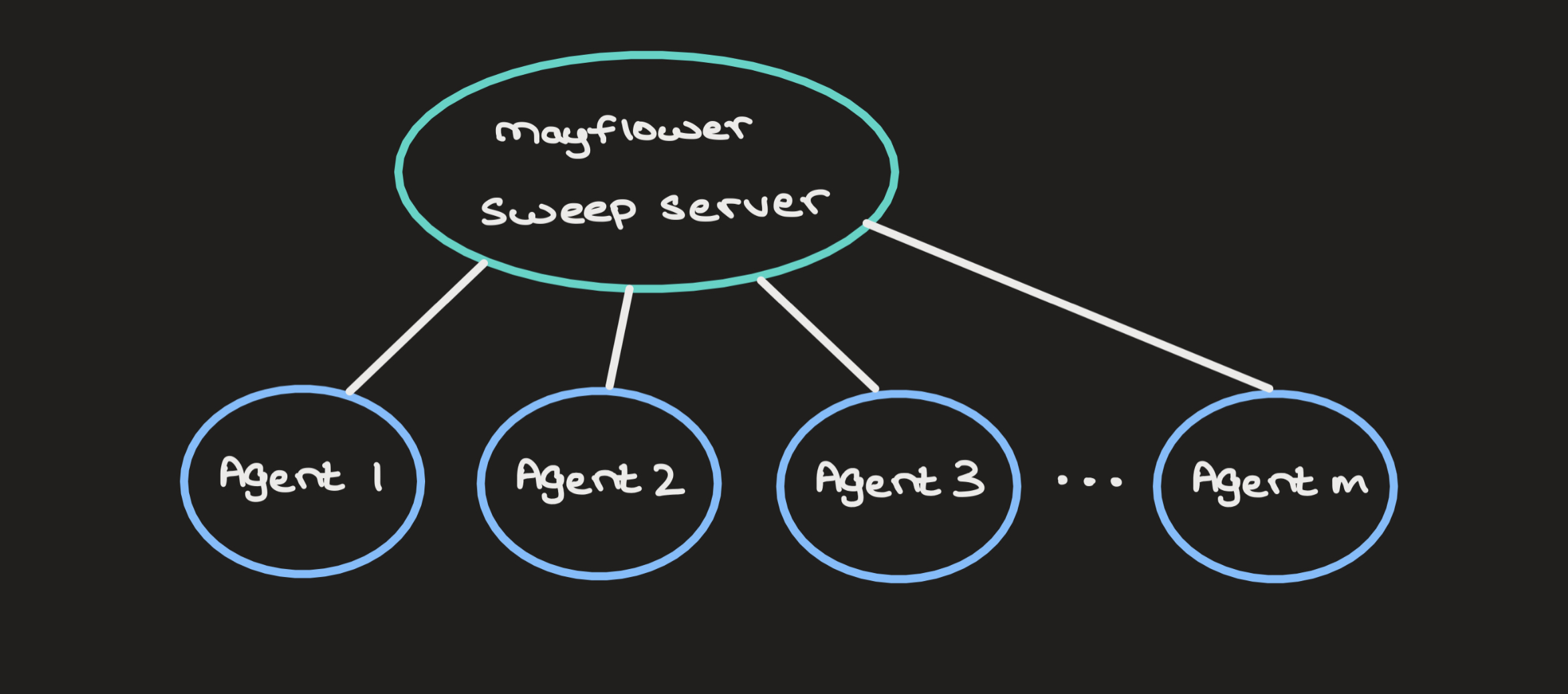Search Tree-based user mimicry for webpage functionality checks and stress testing
Hyperparameter Sweeps are often used to test different configuations of ML models to get the best-performing set of hyperparameters. To do this, there's a central sweep server that runs different agents in parallel (or serially) and logs their results and metrics over time.
Inspired by this, I envision a tool that mimics users on a website to stress test functionality and find loose ends that can be spotted and fixed quickly. I'm talking bugs that developers often miss during their tests.
Mayflower was an English ship that transported Englishmen to America in the early 1600s. Likewise, the mayflower library "brings" fake users to your webpage and performs possible typical interactions.
A typical webpage DOM has actionable elements – ones that users interact with (buttons, checkboxes, textboxes, textareas) – and static elements – ones that display information (paragraphs, headings, images, logos). mayflower looks at all actionable DOM elements and runs random agents that interact with them in different ways.
For each interaction, an agent has a set of actions it can perform (press a button, type text into a textbox, etc.). You can think of this as a search tree where each node is an action that can be performed at the current state (pictured below). Real users are like these agent - they perform a sequence of actions on the webpage, transitioning between pages, and end their sessions at random times.
mayflower mimics users actions and scales from 1 to 10,000 to stress test your website to bug-free perfection. It does this by launching headless browser instances with the webpage in question, running parallellised agents on it.
- Install
mayfloweron your local machine viapip:
pip install mayflower- Have a set of webpages ready (i.e., your web project). Launch the
mayflowerclient:
mayflower test "./pages/login.html"Doing so launches numerous headless browsers with the webpage login.html loaded in and starts the agent sweep on this page.
- View test results:
mayflower console --all-testsThis launches a local browser window on the localhost (port :8008) with all the test results in place. The all-tests flag shows you all past runs performed on your current project in which mayflower has been instantiated.
So you've just run mayflower on a set of webpages. When you launch the console to view the test results, you'll be presented with a GUI summarising the tests. Here are some results that are self-explanatory:
You can even specify the configuration to customise the run. The configuration is given to mayflower as a JSON file. Here are some examples:
| param | remarks | defaults |
|---|---|---|
num_agents |
Number of active agents on a webpage | 1 (int) |
max_moves |
Maximum number of moves an agent can perform (search tree depth) | 5 (int) |
parallel |
Parallel running of agents or not (parallel runs are billed to your provided billing account) | false (bool) |

